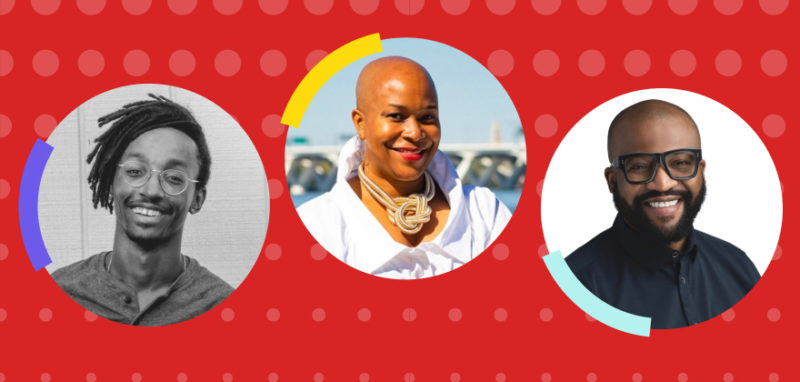
How Unconscious Bias Affects Your Brain (& Your Hiring) Part I
With each new report on American workplace culture, the reality of unconscious bias and the damage it does in the workplace gets harder to deny. Recent–and well circulated–reports out of various organizations have been rife with examples of this toxic phenomenon, and while it’s good to decry these at a high level, it’s just as important to understand where these biases come from and how they manifest in the modern workplace.
While off-color comments and attitudes are a huge part of the problem, the real damage is done when what’s behind remarks like these also underlies recruitment efforts and sets the tone for workplace culture. And while we all imagine ourselves fair and thoughtful people, the very nature of unconscious bias means we aren’t aware of the unjust shortcuts our brains take.

What Exactly is Unconscious Bias?
Biases are “mental shortcuts based on social norms and stereotypes” and can be based on everything from characteristics you might expect (skin color, gender, age, height, parental status) to some you might not (introversion versus extroversion, disability status, foreign accents, where someone went to college). “If you can name it,” notes a white paper from UNC’s Kenan-Flagler Business School, “there is probably an unconscious bias for it.”
Daniel Kahneman explains what happens when your unconscious bias affects your decision making in his 2011 bestseller, Thinking Fast and Slow. He points to two systems operating in our brains.
System 1 operates automatically and quickly, with little or no effort and no sense of voluntary control. Examples of this include detecting if one object is more distant than another, hostility in someone’s voice, answering 2 + 2 = ?, or reading words on large billboards.
System 2 allocates attention to the effortful mental activities that demand it, including complex computations. The operations of System 2 are often associated with the subjective experience of agency, choice, and concentration. Like, say, making hiring decisions.
However, while we’re paying attention to System 2, it’s System 1 that is, at lightning speed and under the radar, “effortlessly originating impressions and feelings that are the main sources of the explicit beliefs and deliberate choices of System 2.” In other words, when we look at “2 + 2” for example, we cannot stop ourselves from thinking “4”—it’s involuntary.
Clearly, we aren’t born believing women are less competent than men, black folks are less competent than white folks, or Southern accents indicate a lack of intelligence or sophistication. Often our unconscious biases are things we may not even believe at all, at least not consciously.
A New York Times interview with Google’s Head of Human Resources, Laszlo Bock, underscores this. After reading about a study suggesting unconscious bias was responsible for systemic discrimination against women applying for scientific jobs in academia, Bock wondered what effect unconscious biases might be having at Google. He noted, “This is a pretty genteel environment, and you don’t usually see outright manifestations of bias. Occasionally you’ll have some idiot do something stupid and hurtful, and I like to fire those people.”
Unfortunately, people firm in the belief that they make decisions based solely on merit, including those with the best intentions of avoiding bias, can have some of the strongest unconscious biases, precisely because they’ve stopped looking for them.
Tech Takes It OnTech companies in particular have been repeatedly raked over the coals for having cultures permeated and shaped by unconscious bias. As a result, many of them have been working to identify and root out unconscious bias in hiring decisions and the workplace at large, due in part to the excellent business case for diversity.
To wit, large tech firms set out to address their workforce’s lack of representation by publishing diversity numbers. Google employed approximately 53,600 people in 2014. Women accounted for 17% percent of its tech workers and 21% of its leadership. Blacks made up a measly 1% of tech workers and 1.5% of the company’s leadership. By 2016, Google had added approximately 18,400 employees, but only increased its female tech contingent to 19% and its leadership to 24%, a gain of 2 and 3 percentage points, respectively. Black tech employees remained at 1% while black leadership gained .5 percentage points, increasing to 2%.
Facebook’s numbers are similar. In 2014, it employed about 9,200 people. Fifteen percent of its tech workers were women, 1% were black. 23% of Facebook’s leadership was female and 2% was black.
By 2016, Facebook had hired an additional 7,800 people. Like Google, Facebook added 2% to the number of women in tech in 2016. Women made up 27% of leadership. Tech workers remained 1% black, while in leadership the number increased 1%, to a total of 3%.
These low numbers aren’t for lack of effort. Both companies have made many of their efforts at dismantling unconscious bias public, and they are huge initiatives backed by large financial investments.
Facebook’s “Managing Bias” workshop points to one resume study, in which researchers sent out an identical resume with either a traditionally male name or traditionally female name. The result? A whopping 79% of the apparently male applicants were worthy of hire, versus only 49% of the apparently female applicants with exactly the same resume.
This kind of bias happens to all of us, regardless of gender, race, ethnicity, and so on. Even moms. According to a statistic in the Facebook workshop, mothers of sons overestimate their child’s crawling ability compared to mothers of daughters, who underestimate their child’s crawling ability.
Why do we all tend to unconsciously overestimate male performance? Researchers believe that being “constantly exposed to certain identity groups being paired with certain characteristics” trains us to “automatically and unconsciously associate the identity with the characteristics, whether or not that association aligns with reality”—and whether or not we consciously make those associations.
So, the simple fact that there are “more CEOs of large U.S. companies who are named David (4.5%) than there are CEOs who are women (4.1%)” means we’re more likely to think that men belong in the C-suite and that most women don’t.
Tying it All TogetherRegrettably, unconscious bias is part of human nature and affects everyone, whether they realize it or not. If any of the above sounds familiar, no, it doesn’t make you a bad person, and no, it doesn’t automatically make your organization racist or misogynistic. Through awareness and education, the effects of unconscious bias on a growing organization can be identified and curtailed. In part II of this post, I’ll detail specific, psychologically defined examples of unconscious bias, and how you can go about eliminating them from your hiring process.
Related blog posts

10 Things You Can Do to Reach DEI Goals
What You’ll Learn The first thing you must do to make meaningful progress on DEI...

Awareness to Action: How to Build a Fair and Inclusive Hiring Process (VIDEO)
How do you eliminate bias from the recruitment process? Watch this on-demand webinar to hear...

Diversity Isn’t Optional: How 3 Talent Leaders Made DEI an Organizational Imperative
All too often, organizations treat DEI initiatives as optional—but this approach...

Diversity & Inclusion Recruitment, Retaining Talent, & More: Talk Talent to Me March ’23 Recap
Catch up on the March 2023 episodes of Hired’s Talk Talent to Me podcast featuring recruiting...

How to Foster Psychological Safety in the Workplace, from Interviews to Management
Why it’s Important to Create an Environment for Employees and Candidates that Welcomes...

Legacy Recruiting Processes Hurt Your DEI Hiring (Here’s Why & How to Fix It)
Hired’s Podcast Talk Talent to Me Speaks with (Former Googler) DEI Sourcing Pro Marvin...
